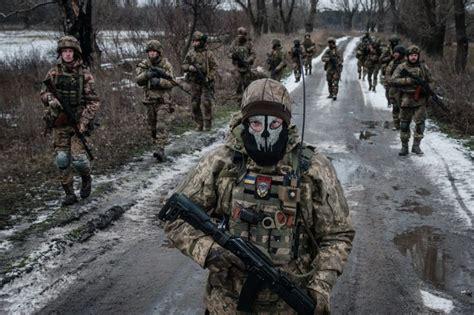
Ukraine Expands Battlefield with Western Arms: The New Front Line Against Russia
As the conflict between Ukraine and Russia takes on a new dimension with the former now permitted to use Western-supplied weapons to strike targets within Russian territory, a significant shift in military strategy is observed. This development comes as a direct response to Russia’s recent aggressive advancements in the north-eastern Kharkiv region, which have posed a severe threat to Ukraine’s second-largest city, situated a mere 30km from the border.
The US Secretary of State Antony Blinken encapsulated the change in approach, stating that “The hallmark of our engagement has been to adapt and adjust as necessary, to meet what’s actually going on on the battlefield, to make sure that Ukraine has what it needs, when it needs it.” The sentiment underscores a new phase of the conflict where restrictions previously imposed by Western allies have been reconsidered in light of escalating tensions and the necessity for Ukraine to defend itself more robustly.
However, the approval to strike inside Russia comes with caveats aimed at limiting escalation. The U.S. has not included long-range weapons such as the Army Tactical Missile Systems (ATACMS) with a range of 300km in its revised policy, maintaining a focus on targets near Ukraine’s border. Despite these restrictions, systems like the multiple rocket launchers HIMARS, with a range of up to 70km, can considerably disrupt Russian logistics and troop movements, potentially slowing down Russian offensive plans.
Yuriy Povkh from the Kharkiv tactical group that coordinates military operations in the north-east, highlighted the strategic importance of this development: “Now, Ukraine can strike places where the enemy concentrated its troops, equipment and supply storage facilities that are used to attack Ukraine.” The Institute for Study of War validated these concerns, citing “expanded activities at depots and warehouses” in the vicinity that Ukrainian forces can now target to reinforce their defensive capabilities.
France, too, appears to have given a green light for the use of its weapons, as indicated by President Emanuel Macron’s comments: “We should allow [Ukraine] to neutralise the military sites from which the missiles are fired and, basically, the military sites from which Ukraine is attacked.” Although French-made Storm Shadow/Scalp cruise missiles have a considerable range of up to 250km, the practicality of their use is constrained by the vulnerability of Ukrainian Su-24s, which must operate close to the border to launch them.
Despite these advancements, the Western weapons are not expected to shield Ukraine from the devastating effect of Russian glide bombs, such as the KABs regularly bombing Kharkiv and other border towns. Ukraine’s only current means to intercept these is the US air-defence system Patriot, which comes with the risk of being targeted and destroyed by Russian missiles.
In addition to utilizing Western arms, Ukraine is pursuing the development of its indigenous weapons to hit targets deeper within Russian territory, with drones attacking installations hundreds of kilometres from the border, such as a recent strike on a radar station in the city of Orsk.
Source » msn.com





